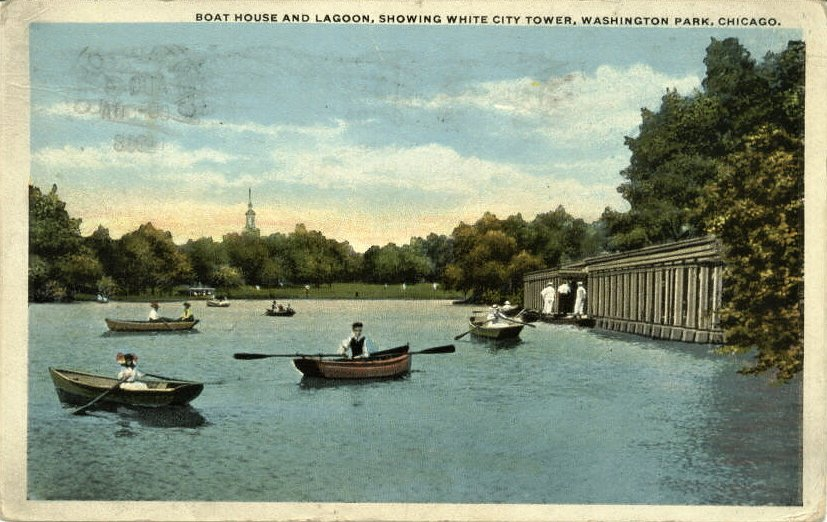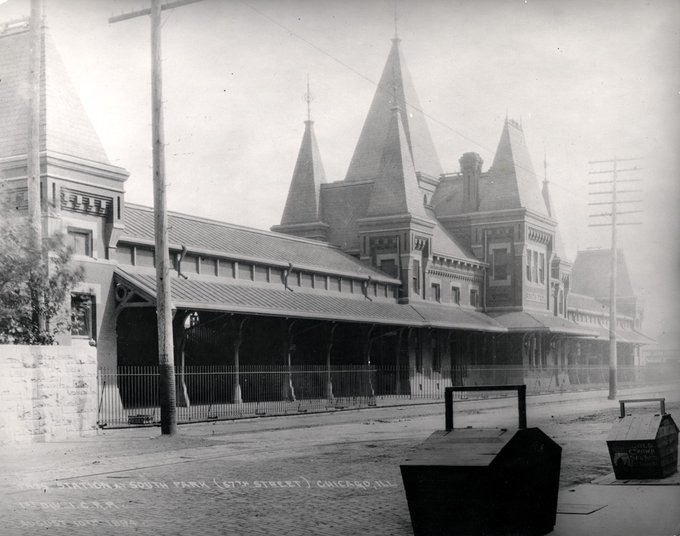August 11
In the early 1950s, the wife of the dean of Meadville Theological Seminary, Mildred LaDue Mead was hired to document conditions during urban renewal. Her photos are fascinating, though rarely this dramatic--labeled "Tight Fit" in 1953. (UChicago Archives apf2-09074)
It's also documenting Conservation Area 1:4:8, High Low Foods was at 1316-1318 55th Street. It had been an A&P store. Between 1909 and 1929, the building housed two theaters--the Monroe and the Harding. The block was torn down in the 1960s to create Nichols Park.
August 12
The University of Chicago won a number of Big 10 Championships in both outdoor and indoor polo long after they weren't a football power. Future senator from Illinois Chuck Percy was the captain of a Big 10 Champion Polo Team at the U of C just before WWII. [UChicago Photo Archives apf4-00828] I discovered UChicago horse polo when researching the Washington Park Armory, which was built in part to host indoor polo. The Illinois National Guard there had a championship team. https://www.hpherald.com/evening_digest/hyde-park-stories-the-armory/article_e02bab82-d0c0-11ec-9282-37c6e6fef6f4.html
August 14: Kenwood Park aka Farmer's Field. in 1922. 50th and Dorchester. I love the story of how spite created a park--told by Susan O'Connor Davis in the Herald (DN-0075190 Chicago History Museum). https://hpherald.newsbank.com/doc/news/16A85D231036E100
August 15 A souvenir of the Columbian Exposition--one of the Tesla/Westinghouse manhole covers in Jackson Park. I know of two of them and I've heard there's at least another near the 63rd Street Beach. A detailed description of the electrical subways and service systems: Jan 1893 : Description of Underground Subway for Electrical Power - Pluto Insulators
August 16
The American School of Correspondence building is by Pond and Pond--members of the artist colony gathered around Lorado Taft and Jane Addams. It's now landmarked and owned by the university. The school still exists in Lansing, IL. (ad in the Art Institute digital collection) Grading exams at the American School of Correspondence was a rite of passage for English grad students before there was support. You ripped through the stacks of paper exams as possible, just as the students had done, though occasionally there was one that was a pleasure. Rehabbed, the building is a lovely example of Arts and Crafts but in the 1970s it felt very dim as though the grime on the windows and desks hadn't been disturbed since it was built in 1906. I'm thinking Pond and Pond may be worth a Hyde Park Story: http://hansjager.blogspot.com/2012/12/out-from-sidelines-autobiography-and.html More on the building: American School of Correspondence, Chicago | SAH ARCHIPEDIA (sah-archipedia.org)
August 17
Cooling off before air conditioning. 1930. Drexel Fountain, the oldest sculpture in Chicago in public parks (DN 0092530, Chicago History Museum) https://www.chicagoparkdistrict.com/parks-facilities/washington-drexel-fountain
















